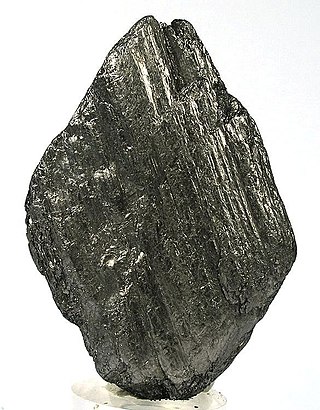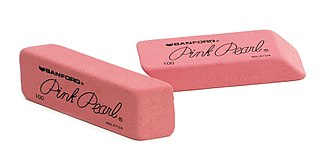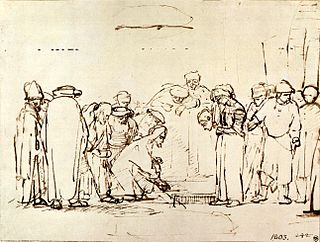
A pencil drawing is a drawing that is made with a pencil (which is composed of wood and graphite).

A pencil drawing is a drawing that is made with a pencil (which is composed of wood and graphite).
Pencil drawings were not known before the 17th century, [1] with the modern concept of pencil drawings taking shape in the 18th and 19th centuries. [1] Pencil drawings succeeded the older metalpoint drawing stylus, which used metal instead of graphite. [1]
Modern artists continue to use the graphite pencil for artworks and sketches. [1]
Drawings that are done by color pencils bring a more lively appearance and make them look more realistic. A great number of people consider them as a gift for special occasions for the unique value pencil portraits bring.
With the use of charcoal pencils, artists can create beautiful drawings with their hands and well-trained talents. https://www.pencilperceptions.com/web-stories/learn-pencil-sketch-in-8-simple-steps/ pencil sketch

Drawing is a visual art that uses an instrument to mark paper or another two-dimensional surface. The instrument might be pencils, crayons, pens with inks, brushes with paints, or combinations of these, and in more modern times, computer styluses with graphics tablets.

Graphite is a crystalline form of the element carbon. It consists of stacked layers of graphene. Graphite occurs naturally and is the most stable form of carbon under standard conditions. Synthetic and natural graphite are consumed on large scale for uses in pencils, lubricants, and electrodes. Under high pressures and temperatures it converts to diamond. It is a good conductor of both heat and electricity.

A pencil is a writing or drawing implement with a solid pigment core in a protective casing that reduces the risk of core breakage, and keeps it from marking the user's hand.

A pastel is an art medium in a variety of forms including a stick, a square, a pebble, or a pan of color, though other forms are possible; they consist of powdered pigment and a binder. The pigments used in pastels are similar to those used to produce some other colored visual arts media, such as oil paints; the binder is of a neutral hue and low saturation. The color effect of pastels is closer to the natural dry pigments than that of any other process. Pastels have been used by artists since the Renaissance, and gained considerable popularity in the 18th century, when a number of notable artists made pastel their primary medium.

A drawing board is, in its antique form, a kind of multipurpose desk which can be used for any kind of drawing, writing or impromptu sketching on a large sheet of paper or for reading a large format book or other oversized document or for drafting precise technical illustrations. The drawing table used to be a frequent companion to a pedestal desk in a study or private library, during the pre-industrial and early industrial era.

An eraser is an article of stationery that is used for removing marks from paper or skin. Erasers have a rubbery consistency and come in a variety of shapes, sizes, and colors. Some pencils have an eraser on one end. Less expensive erasers are made from synthetic rubber and synthetic soy-based gum, but more expensive or specialized erasers are made from vinyl, plastic, or gum-like materials.

A penciller is an artist who works on the creation of comic books, graphic novels, and similar visual art forms, with a focus on the initial pencil illustrations, usually in collaboration with other artists, who provide inks, colors and lettering in the book, under the supervision of an editor.

Silverpoint is a traditional drawing technique first used by medieval scribes on manuscripts.

A figure drawing is a drawing of the human form in any of its various shapes and postures, using any of the drawing media. The term can also refer to the act of producing such a drawing. The degree of representation may range from highly detailed, anatomically correct renderings to loose and expressive sketches. A life drawing is a drawing of the human figure, traditionally nude, from observation of a live model. Creating life drawings, or life studies, in a life class, has been a large element in the traditional training of artists in the Western world since the Renaissance.
A writing implement or writing instrument is an object used to produce writing. Writing consists of different figures, lines, and or forms. Most of these items can be also used for other functions such as painting, drawing and technical drawing, but writing instruments generally have the ordinary requirement to create a smooth, controllable line.

A sketchbook is a book or pad with blank pages for sketching and is frequently used by artists for drawing or painting as a part of their creative process. Some also use sketchbooks as a sort of blueprint for future art pieces. The exhibition of sketchbooks at the Fogg Art Museum at Harvard University in 2006 suggested that there were two broad categories for classifying sketches:

A sketch is a rapidly executed freehand drawing that is not usually intended as a finished work. A sketch may serve a number of purposes: it might record something that the artist sees, it might record or develop an idea for later use or it might be used as a quick way of graphically demonstrating an image, idea or principle. Sketching is the most inexpensive art medium.

A kneaded eraser, also commonly known as a putty rubber, is a pliable erasing tool used by artists. It is usually made of a grey or white unvulcanized rubber resembling putty or chewing gum. It functions by absorbing and "picking up" graphite and charcoal particles, in addition to carbon, colored pencil, or pastel marks. It neither wears nor leaves residue, thereby lasting much longer than other erasers.

Danja Akulin rose to prominence by creating large format pencil drawings that reinstate this genre's autonomous value.
The following outline is provided as an overview of and typical guide to drawing and drawings:

The visual arts are art forms such as painting, drawing, printmaking, sculpture, ceramics, photography, video, filmmaking, design, crafts, and architecture. Many artistic disciplines, such as performing arts, conceptual art, and textile arts, also involve aspects of the visual arts as well as arts of other types. Also included within the visual arts are the applied arts, such as industrial design, graphic design, fashion design, interior design, and decorative art.

A colored pencil, coloured pencil, map pencil, pencil crayon, or coloured/colouring lead is an art medium constructed of a narrow, pigmented core encased in a wooden cylindrical case. Unlike graphite and charcoal pencils, colored pencils' cores are wax- or oil-based and contain varying proportions of pigments, additives, and binding agents. Water-soluble (watercolor) pencils and pastel pencils are also manufactured as well as colored cores for mechanical pencils.

Artists' charcoal is charcoal used as a dry art medium. Both compressed charcoal and charcoal sticks are used. The marks it leaves behind on paper are much less permanent that with other media such as graphite, and so lines can easily be erased and blended. Charcoal can produce lines that are very light or intensely black. The dry medium can be applied to almost any surface from smooth to very coarse. Fixatives are used with charcoal drawings to solidify the position to prevent erasing or rubbing off of charcoal dusts.
Willie Young is a 20th-century American artist. Young is mainly self-taught, and his work has been exhibited alongside other prominent outsider artists, such as Bill Traylor, Nellie Mae Rowe and Thornton Dial. The main body of his work consists of delicately rendered graphite drawings.

Splendid Mountain Watercolours or Splendid Mountain Sketchbook is a collection of sketches and watercolors by John Singer Sargent (1856–1925), executed when he was fourteen years old, and on a summer excursion to Switzerland's Bernese Alps in the Berner Oberland in 1870. The sketchbook contains 60 leaves, including 14 watercolors and 47 crayon or graphite studies of the mountains, landscapes and people he encountered while traveling with his family.
{{cite encyclopedia}}: |website= ignored (help)